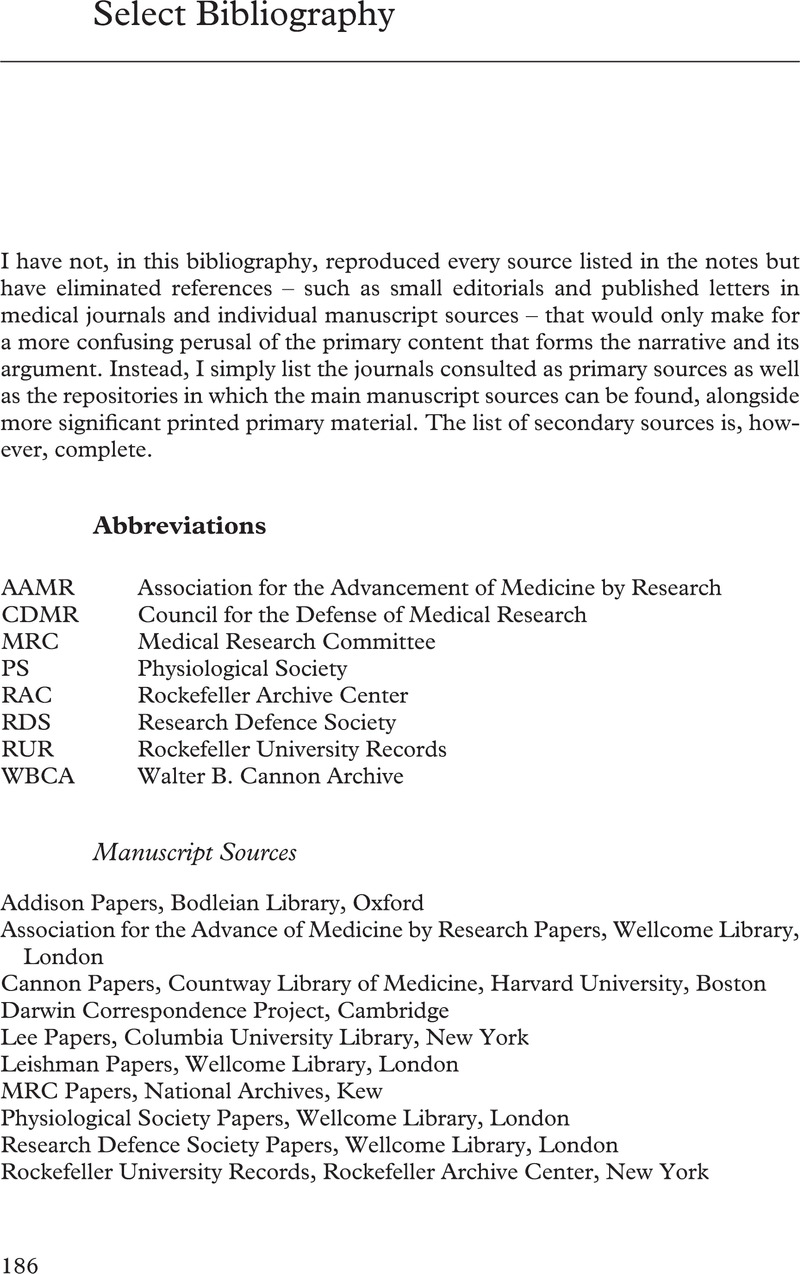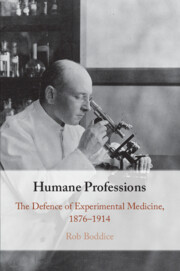Book contents
- Humane Professions
- Humane Professions
- Copyright page
- Dedication
- Contents
- Illustrations
- Acknowledgements
- Introduction: Experior
- 1 Darwin’s Compromise
- 2 Medical Monsters?
- 3 Of Laboratories and Legislatures
- 4 Paget’s Public
- 5 Cannon Fire
- Epilogue: Humanity and Human Experimentation
- Select Bibliography
- Index
- References
Select Bibliography
Published online by Cambridge University Press: 22 January 2021
- Humane Professions
- Humane Professions
- Copyright page
- Dedication
- Contents
- Illustrations
- Acknowledgements
- Introduction: Experior
- 1 Darwin’s Compromise
- 2 Medical Monsters?
- 3 Of Laboratories and Legislatures
- 4 Paget’s Public
- 5 Cannon Fire
- Epilogue: Humanity and Human Experimentation
- Select Bibliography
- Index
- References
Summary

- Type
- Chapter
- Information
- Humane ProfessionsThe Defence of Experimental Medicine, 1876–1914, pp. 186 - 199Publisher: Cambridge University PressPrint publication year: 2021



